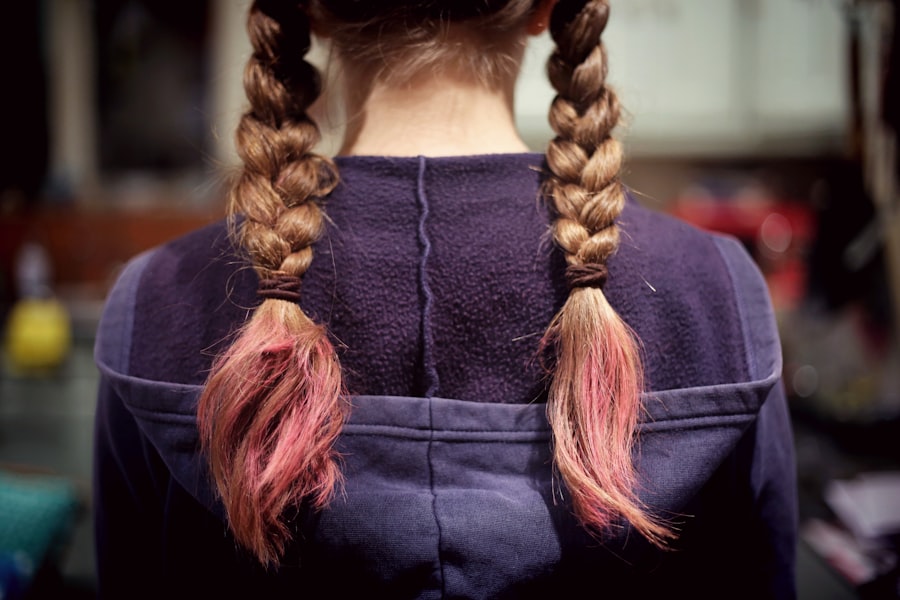To truly appreciate the effects of hair removal treatments like Soprano Ice, it’s essential to first understand the hair growth cycle. Your hair goes through three distinct phases: anagen, catagen, and telogen. The anagen phase is the active growth stage, where hair follicles are busy producing new hair.
This phase can last anywhere from two to seven years, depending on various factors such as genetics and health. During this time, you may notice that your hair grows steadily and appears thick and healthy. Following the anagen phase is the catagen phase, which is a transitional period lasting about two to three weeks.
During this time, hair growth slows down, and the hair follicle begins to shrink. This phase is crucial as it prepares the hair for eventual shedding. Finally, there’s the telogen phase, which is the resting stage lasting around three months.
At this point, the hair is no longer growing, and it will eventually fall out to make way for new hair growth. Understanding these phases can help you set realistic expectations regarding hair regrowth after any hair removal treatment.
Key Takeaways
- The hair growth cycle consists of three main phases: anagen, catagen, and telogen.
- Soprano Ice hair removal impacts hair growth by targeting the hair follicles during the anagen phase.
- Factors affecting post-Soprano Ice hair loss timing include individual hair growth cycles and treatment frequency.
- Managing expectations for hair regrowth after Soprano Ice treatment involves understanding the gradual nature of regrowth and potential need for maintenance sessions.
- Tips for promoting hair regrowth post-Soprano Ice hair removal include maintaining a healthy lifestyle, using hair growth products, and protecting the skin from sun damage.
The Impact of Soprano Ice Hair Removal on Hair Growth
How it Works
When you undergo this treatment, the laser energy is absorbed by the pigment in your hair follicles, leading to their destruction. This process disrupts the normal hair growth cycle, particularly affecting the anagen phase where active growth occurs.
Effective for a Wide Range of Skin Types and Hair Colors
One of the most appealing aspects of Soprano Ice is its ability to treat a wide range of skin types and hair colors. Unlike traditional laser treatments that may struggle with lighter or finer hair, Soprano Ice can effectively target various hair types due to its unique technology.
A Game-Changer for Unwanted Hair Growth
This means that if you have been struggling with unwanted hair growth, this treatment could be a game-changer for you. However, it’s important to remember that while Soprano Ice can significantly reduce hair growth, it may not guarantee permanent removal for everyone.
Factors Affecting Post-Soprano Ice Hair Loss Timing

After undergoing Soprano Ice treatment, you might be curious about how long it will take for your hair to stop growing completely. Several factors can influence this timing. One of the most significant factors is your individual hair growth cycle. Since each person’s anagen phase varies in duration, some may experience quicker results than others.
Another factor to consider is the area being treated. Different parts of your body have varying hair growth rates; for instance, facial hair may grow back faster than leg hair. Additionally, hormonal influences can play a role in how quickly your hair regrows after treatment.
Hormonal fluctuations can stimulate dormant follicles, leading to unexpected regrowth in some individuals. Therefore, it’s essential to keep these factors in mind when assessing your post-treatment experience.
Managing Expectations for Hair Regrowth after Soprano Ice Treatment
| Expectation | Reality |
|---|---|
| Immediate results | Visible results may take time |
| Complete regrowth | Regrowth may vary for each individual |
| Painless treatment | Some discomfort may be experienced |
| Permanent hair removal | Long-term reduction in hair growth |
Managing your expectations after Soprano Ice treatment is crucial for a satisfying experience. While many individuals report a significant reduction in hair growth after just a few sessions, it’s important to understand that complete hair removal may take multiple treatments. You should anticipate a gradual decrease in hair density rather than an immediate transformation.
This gradual process allows your body to adjust and respond to the treatment effectively. Moreover, it’s essential to recognize that some regrowth may still occur even after completing your sessions. This doesn’t necessarily mean that the treatment was ineffective; rather, it reflects the natural variability of your hair growth cycle and individual response to the laser treatment.
By setting realistic expectations and understanding that some regrowth may happen, you can approach your post-treatment journey with a more positive mindset.
Tips for Promoting Hair Regrowth Post-Soprano Ice Hair Removal
If you find yourself dealing with unexpected hair regrowth after Soprano Ice treatment, there are several strategies you can employ to promote healthy regrowth. First and foremost, maintaining a balanced diet rich in vitamins and minerals can significantly impact your hair health. Nutrients such as biotin, zinc, and vitamins A and E are known to support healthy hair growth.
Incorporating foods like nuts, leafy greens, and fish into your diet can provide your body with the necessary building blocks for robust hair. Additionally, consider adopting a gentle hair care routine that minimizes damage to your follicles. Avoid harsh chemicals and heat styling tools that can weaken your hair strands.
Instead, opt for natural products that nourish your scalp and promote healthy growth. Regular scalp massages can also stimulate blood circulation and encourage new growth by ensuring that your follicles receive adequate nutrients and oxygen.
Potential Side Effects and Complications of Soprano Ice Hair Removal

While Soprano Ice is generally considered safe and effective for most individuals, it’s essential to be aware of potential side effects and complications that may arise from the treatment. Common side effects include temporary redness or swelling in the treated area, which usually subsides within a few hours to a couple of days. Some individuals may also experience mild discomfort during the procedure; however, the cooling technology of Soprano Ice helps minimize this sensation.
In rare cases, more severe side effects can occur, such as blistering or changes in skin pigmentation. If you have sensitive skin or a history of skin conditions, it’s crucial to discuss these concerns with your practitioner before undergoing treatment. They can help assess your suitability for Soprano Ice and provide guidance on how to minimize potential risks.
Seeking Professional Advice for Post-Soprano Ice Hair Loss Concerns
If you find yourself facing unexpected challenges with post-Soprano Ice hair loss or regrowth concerns, seeking professional advice is always a wise decision. A qualified practitioner can evaluate your specific situation and provide tailored recommendations based on your individual needs. They can help determine whether any underlying factors may be contributing to your experience and suggest appropriate solutions.
Additionally, professionals can offer insights into follow-up treatments or maintenance sessions that may be beneficial for you. Regular check-ins with your practitioner can help ensure that you’re on track with your hair removal goals and address any concerns that may arise along the way.
Long-Term Considerations for Soprano Ice Hair Removal and Hair Regrowth
As you consider long-term options for managing unwanted hair growth through Soprano Ice treatment, it’s essential to think about how this method fits into your overall beauty routine. Many individuals find that after completing their initial series of treatments, they enjoy significantly reduced maintenance needs compared to traditional methods like shaving or waxing. This long-term reduction in hair density can lead to smoother skin and increased confidence.
However, it’s important to remain vigilant about any changes in your body or hormonal levels that could affect future hair growth. Regular follow-up sessions may be necessary to maintain optimal results over time. By staying informed about your body’s responses and working closely with professionals in the field, you can ensure that your experience with Soprano Ice remains positive and effective in the long run.
In conclusion, understanding the intricacies of the hair growth cycle and how treatments like Soprano Ice impact this process is vital for anyone considering laser hair removal. By managing expectations and seeking professional guidance when needed, you can navigate your post-treatment journey with confidence and achieve the smooth skin you desire.
If you are curious about the process of hair removal with Soprano Ice technology and how long it takes for hair to fall out after treatment, you may find the article “The Science Behind Soprano Ice Laser Hair Removal” on In Laser Hair Removal’s blog to be informative. This article delves into the technology behind Soprano Ice and explains the timeline for hair shedding post-treatment. It is a great resource for those looking to understand the effectiveness and results of this popular hair removal method.
FAQs
What is Soprano Ice?
Soprano Ice is a type of laser hair removal treatment that uses a diode laser to target and destroy hair follicles, resulting in long-term hair reduction.
How long does it take for hair to fall out after Soprano Ice treatment?
After a Soprano Ice treatment, it is common for the targeted hair to fall out within 1 to 3 weeks. This process is known as shedding and is a natural part of the hair removal process.
Why does hair fall out after Soprano Ice treatment?
The Soprano Ice treatment damages the hair follicles, which disrupts the hair growth cycle. This ultimately leads to the shedding of the treated hair.
Is it normal for some hair to not fall out after Soprano Ice treatment?
It is possible for some hair to not fall out after a Soprano Ice treatment, as not all hair follicles may be effectively targeted during the initial treatment. Additional sessions may be needed to achieve optimal results.
How many Soprano Ice treatments are typically needed for optimal results?
The number of Soprano Ice treatments needed for optimal results can vary depending on individual factors such as hair type, skin tone, and the treatment area. However, most individuals require multiple sessions, typically spaced 4-6 weeks apart, to achieve the desired hair reduction.






